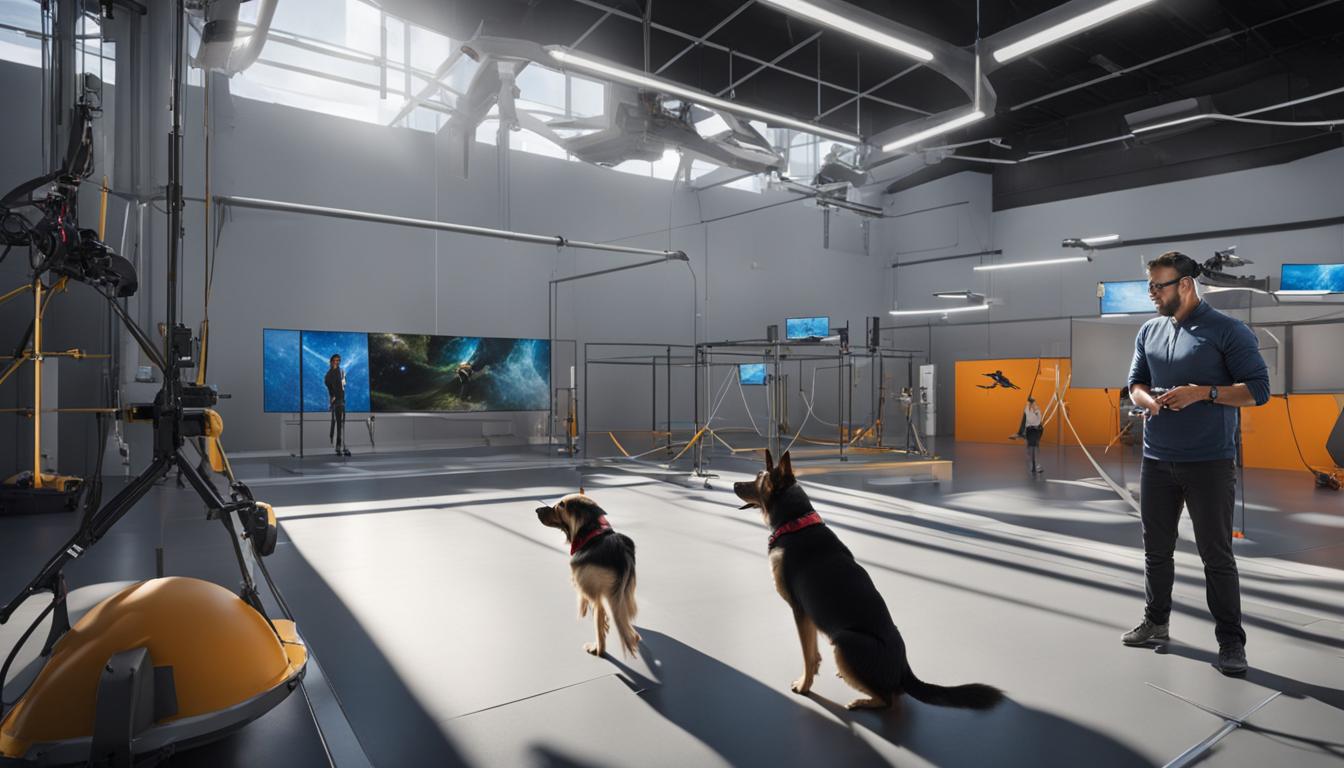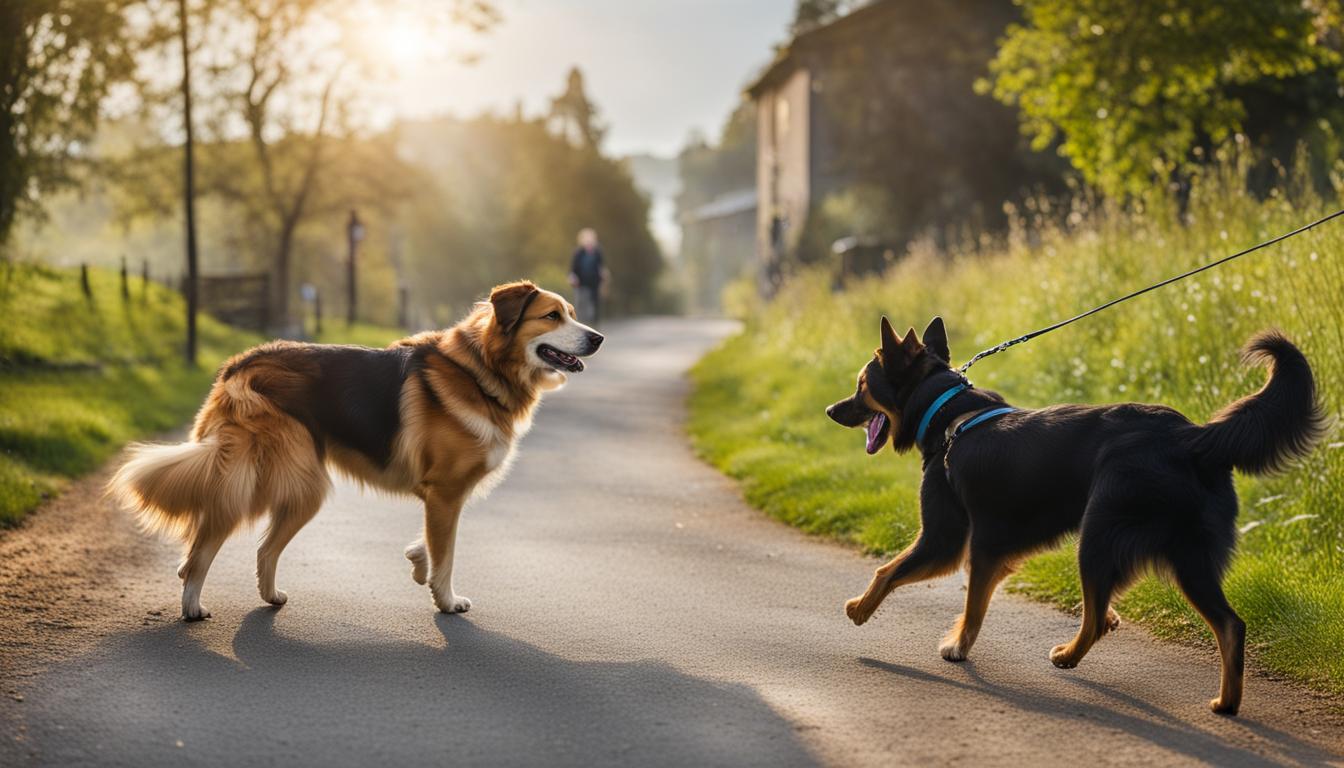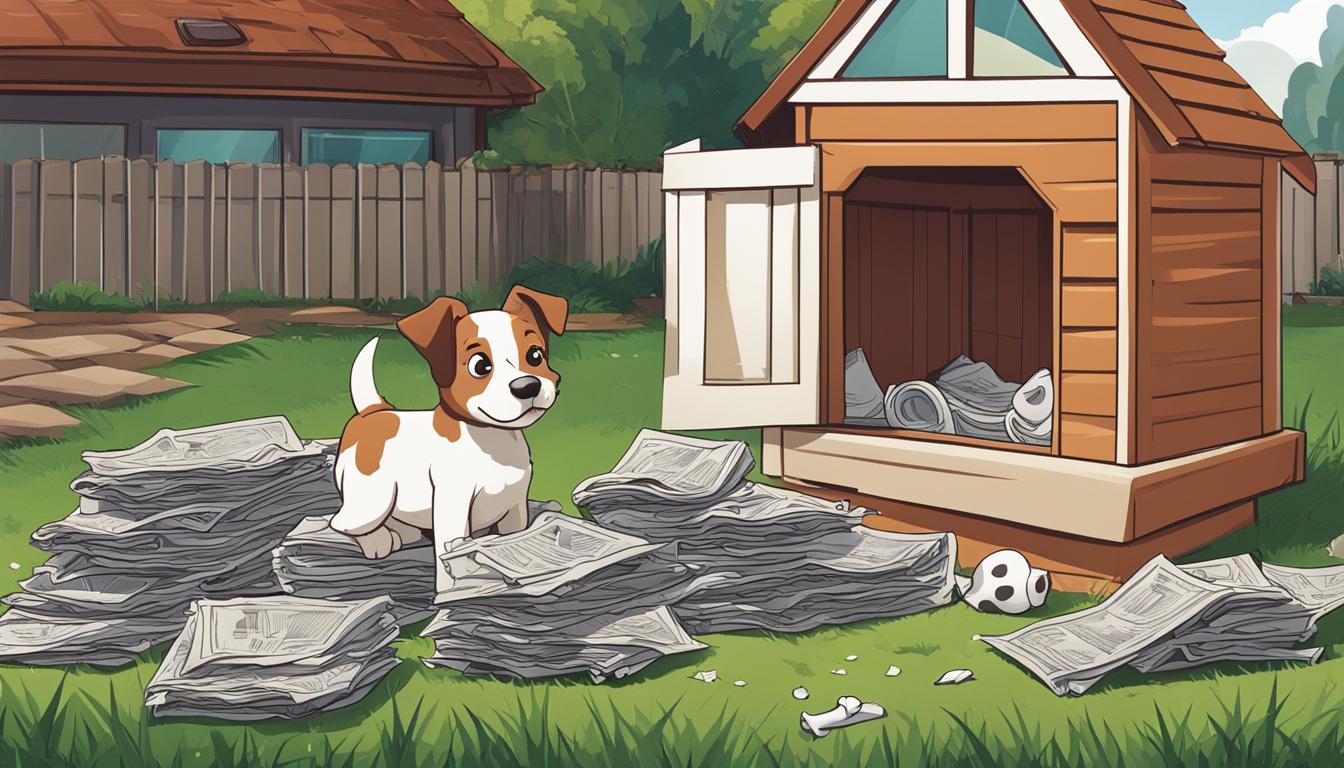Welcome to our comprehensive guide on canine separation anxiety! If you have a furry friend who experiences distress when you’re away, this article is here to help you understand the causes and provide effective solutions. Separation anxiety in dogs can be a challenging issue, but with the right knowledge and approach, you can make a positive difference in your pup’s life.
Key Takeaways:
- Canine separation anxiety can be prevented through proper socialization and training during puppyhood.
- Dogs with separation anxiety may exhibit distress behaviors such as vocalization, destruction, and house soiling.
- Common causes of separation anxiety in dogs include changes in routine, moving homes, traumatic events, and being left alone in a boarding kennel.
- Effective solutions for treating separation anxiety include tiring out the dog with exercise, establishing a routine, creating a safe space, and considering anti-anxiety medication.
- Patience, compassion, and consistency are key when treating separation anxiety, and it may take time to see improvements in your dog’s behavior.
Prevention and Proper Socialization for Dog Separation Anxiety
Preventing separation anxiety in dogs starts with proper socialization and training during puppyhood. Puppies should be exposed to different animals and people to help them become well-adjusted and less likely to develop separation anxiety in the future. It is important to teach puppies how to have alone time and amuse themselves with toys. Rewarding desired behaviors and providing an enriched environment can also help prevent separation anxiety.
By establishing a predictable routine and using predictable rewards, puppies can learn to settle and relax when alone. Gradually shaping longer periods of inattention before attention is given can also help puppies learn that calm and quiet behavior is the only way to receive attention. Providing mental stimulation through puzzle toys and interactive games can also help puppies become more self-reliant and less dependent on constant human interaction.
Benefits of Proper Socialization for Puppies:
- Reduces the likelihood of separation anxiety
- Builds confidence and independence
- Improves overall behavior and adaptability
- Enhances the bond between the puppy and the owner
- Creates a well-rounded and well-behaved adult dog
“Proper socialization during puppyhood is key to preventing separation anxiety in dogs. By exposing puppies to a variety of experiences, people, and animals, they learn to adapt and feel comfortable in different situations. This helps them develop the confidence and independence needed to handle being alone without experiencing anxiety.”
Remember, prevention is always better than treatment when it comes to separation anxiety. Taking the time to properly socialize and train your puppy can greatly reduce the chances of them developing separation anxiety in the future. By setting a solid foundation during their early months, you can help your furry friend grow into a confident and well-adjusted adult dog.
Common Causes and Symptoms of Canine Separation Anxiety
Canine separation anxiety can be caused by various factors that disrupt a dog’s sense of security and routine. These causes can include changes in routine, such as a shift in the owner’s work schedule or a new family member entering the household. Moving homes or experiencing traumatic events, such as the loss of a loved one or a frightening encounter, can also trigger separation anxiety in dogs. Additionally, being left alone in a boarding kennel or experiencing a lengthy period of separation from their owner can contribute to the development of separation anxiety.
Dogs with separation anxiety often exhibit a range of distressing behaviors when they are separated from their owners. These symptoms can serve as indicators of the condition. Some common signs of dog separation anxiety include vocalization, such as excessive barking or howling, destructive behavior, such as chewing on furniture or scratching at doors, and house soiling, where the dog eliminates indoors even if previously house trained. Other symptoms may include restlessness, shaking, salivating, refusing to eat, or becoming quiet and withdrawn.
It’s important to note that while these behaviors are often associated with separation anxiety, it’s essential to rule out other potential causes for the dog’s distress. Incomplete house training, medical issues, or other behavioral problems can manifest in similar ways. Keeping a record of the dog’s behavior when left alone and consulting with a veterinarian or professional dog trainer can help determine if separation anxiety is the root cause.

Causes of Separation Anxiety in Dogs:
- Changes in routine
- Moving homes
- Traumatic events
- Being left alone in a boarding kennel
Signs and Symptoms of Dog Separation Anxiety:
- Vocalization (excessive barking or howling)
- Destructive behavior (chewing, scratching)
- House soiling (indoor elimination)
- Restlessness
- Shaking
- Salivating
- Refusing to eat
- Becoming quiet and withdrawn
Understanding the common causes and symptoms of canine separation anxiety is crucial for effectively addressing the condition and implementing appropriate treatment strategies.
Effective Solutions for Canine Separation Anxiety
If your dog is struggling with separation anxiety, there are several effective solutions that can help alleviate their distress. By implementing the following strategies and techniques, you can work towards overcoming your dog’s separation anxiety:
Establishing a Routine
Creating a consistent routine for your dog can help provide them with a sense of security and stability. Stick to a regular schedule for feeding, walking, and playtime, both when you are with your dog and when you are away. By establishing a predictable routine, your dog will start to associate certain activities with your departure or absence, reducing their anxiety levels.
Creating a Safe Space
When you are not at home, confining your dog to a safe space can help them feel more secure. Instead of using a crate, consider setting up a dedicated room or area with their favorite toys, comfortable bedding, and objects that have your scent on them. This safe space should have windows or a view to alleviate any feelings of isolation and confinement.
Positive Reinforcement Training
Positive reinforcement training techniques can be highly effective in helping dogs overcome separation anxiety. Teach your dog to associate positive experiences with being alone by rewarding calm and relaxed behavior when you are not present. Gradually increase the duration of time you spend away, ensuring that your dog remains calm throughout the training process.
Consider Anti-Anxiety Medication
In severe cases of separation anxiety, your veterinarian may recommend anti-anxiety medication to help lower your dog’s anxiety baseline. These medications can help reduce your dog’s overall anxiety levels and make it easier for them to cope with being alone. Always consult with your vet before starting any medication regimen.
Remember, treating separation anxiety in dogs requires patience, consistency, and a tailored approach. It’s important to never punish your dog for exhibiting anxiety-related behaviors, as this can worsen their anxiety and undermine their progress. With the right strategies and support, you can help your dog overcome separation anxiety and create a peaceful and harmonious environment for both of you.
Conclusion
Dealing with canine separation anxiety can be challenging, but with the right knowledge and strategies, you can help your dog overcome this distressing condition. By understanding the causes and symptoms of separation anxiety in dogs, you can take proactive steps to prevent its development through proper socialization and training during puppyhood.
When it comes to managing separation anxiety, there are effective solutions available. Providing your dog with plenty of physical and mental exercise, such as long walks and puzzle treats, can help reduce their anxiety levels. Establishing a consistent routine and creating a safe space with familiar objects and scents can also provide comfort when you’re not around.
If your dog’s separation anxiety is severe, it may be necessary to consult with a veterinarian who can prescribe anti-anxiety medication to alleviate their symptoms. Additionally, positive reinforcement training can be an invaluable tool in teaching your dog to settle and relax on command.
Remember, managing separation anxiety requires patience, compassion, and consistency. With your love and support, your furry friend can learn to cope with their anxiety and lead a stress-free life. So, don’t despair—there is hope for both you and your beloved pet!
FAQ
How can separation anxiety in dogs be prevented?
Separation anxiety in dogs can be prevented through proper socialization and training during puppyhood. This includes exposing them to different animals and people, teaching them how to have alone time, and rewarding desired behaviors.
What are the causes and symptoms of canine separation anxiety?
Canine separation anxiety can be caused by changes in routine, moving homes, traumatic events, or being left alone in a boarding kennel. Symptoms may include vocalization, destruction, house soiling, restlessness, shaking, salivating, refusal to eat, or becoming quiet and withdrawn.
How can canine separation anxiety be treated?
Treatment options for separation anxiety include tiring out the dog with exercise and puzzle treats, establishing a routine, using soothing music, creating a safe space, considering anti-anxiety medication, and positive reinforcement training.
How long does it take to see improvement in a dog’s behavior when treating separation anxiety?
Treating separation anxiety requires patience, compassion, and consistency. It may take months to see improvement in the dog’s behavior, but with the right approach, positive changes can be achieved.
Is separation anxiety a common problem among dogs?
Yes, separation anxiety is a common problem faced by many pet owners. Understanding the causes and symptoms and implementing effective solutions can help manage and alleviate separation anxiety in dogs.





